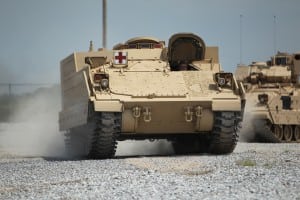
BAE Systems May 28 said it submitted its bid for the Army’s Armored Multi-Purpose Vehicle (AMPV) program to replace the aging M113 with a vehicle that would be safer and more survivable for soldiers. Potential bidder General Dynamics [GD] passed after declining to pursue the issue in federal court. Navistar Defense, which had expressed some interest, also passed. The Army now plans a decision on the program in 2015. The potential multi-billion priority program for the land force--along with the Joint…










